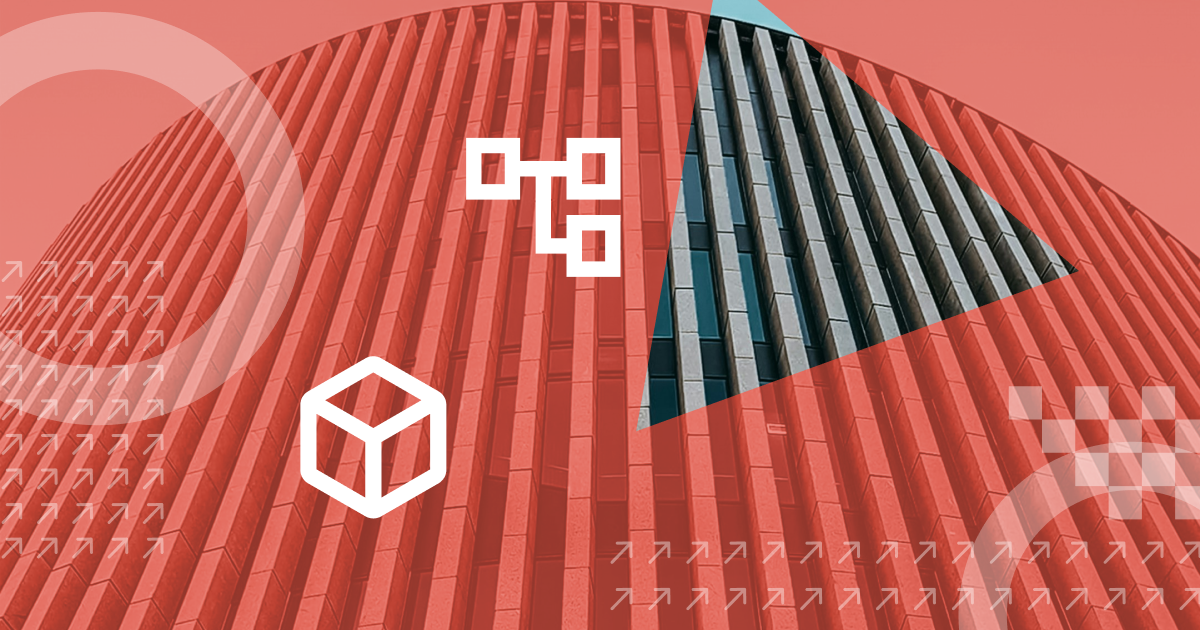How agile content supply chains will power future B2B digital experiences

An agile content supply chain combines AI, automation and flexible technology to enable faster, personalized content creation and delivery. It supports an iterative approach that enables you to stay competitive and meet evolving customer demands. Start building one today with the assurance and scalability of a headless CMS.
Highlights
You'll learn about the future of the B2B content supply chain, focusing on agility, automation and seamless delivery:
- Agility: Enables flexible workflows and rapid adaptation to market changes
- Automation: Speeds up content creation, reduces errors and streamlines publishing
- Seamless delivery: Uses headless CMS and APIs for consistent omnichannel experiences
Adopt these to build a scalable, efficient content supply chain that drives B2B success.
A content supply chain is the structured processes with which B2B companies plan, create, manage, share and track content. Traditionally, this process used to be manual, rigid and slow. However, technology and global business dynamics have changed. Buyers want more personalized content, and this requires a new approach, driven by AI and automation.
A content supply chain of the future should be backed by flexible technology, adequate planning and financial resources and strategic management. According to this IBM report, organizations that take such a proactive approach report 22% higher ROI than their counterparts. This underlines the importance of building a content supply chain fit for the future.
What will the content supply chain look like in the future?
Rising trends such as modular content blocks, headless and API-first systems and compliance integration are key factors to note. Along with generative AI, they will share the future of content supply chains. Research shows that 74% of marketers use AI to generate content. With growing optimism surrounding its usage, it will be useful for ideating and automating workflows.
Beyond that, marketers will rely on live data to set goals for future content supply chains. This is where modular systems will shine, as they are the ideal tool to manage, repurpose and personalize content. There will also be greater investment in analytics — ensuring that marketing teams know what to publish and at what times are most suitable.
Overcome traditional CMS issues with Contentstack: Are you tired of slow development times and rising costs due to legacy monolithic suites? Contentstack offers a modern, component-based solution designed for the needs of today's enterprises. Discover agility and improved ROI. Request a demo to learn more.
Why scalability and continuous improvement keep you competitive
A scalable system allows you to handle more complex demands. For example, you can expand your content strategy to new markets. Such advancements will help you stay ahead of industry trends and deploy innovations to meet customer needs.
Modern systems, like a headless CMS, also feature analytics that help you track performance. With that, you can spot deficiencies, plan data-driven adjustments, align performance with new market demands and improve consistently. So, combining scalability with ongoing improvement helps your business to become more responsive and outperform competing brands.
What role will automation and AI play in future content supply chains?
Automation and AI will speed up content cycles and make it more scalable. Through real-time data insights, they will upscale all processes involved in the content lifecycle.
AI systems will also give teams insights to scale with dynamic, modular assets. It will also drive real-time hyper-personalized content delivery. With automation, you are looking at faster and more consistent workflows, with fewer human errors.

How generative AI accelerates content creation and delivery
With generative AI, you can scale content creation and publish faster. Beyond that, content creators can use it to:
- Create content outlines, drafts and visual designs from prompts
- Format content assets to meet the requirements of different platforms
- Translate, localize and personalize content
- Review content to ensure it aligns with a brand’s voice and style
The role of automation in future content supply chains
Automation will streamline each stage, from ideation through delivery and optimization, while reducing manual bottlenecks. It will power dynamic multi-channel publishing, continuous optimization and smart content creation. It will also be used to:
- Format and tag content for SEO compliance
- Screen content using pre-set rules to ensure it meets data governance standards
- Gather content performance insights to adapt content
- Track data security and regulatory compliance with CMSes and composable DXPs
- Trigger hands-off and shorten the content lifecycle
Tools and technology for modern content supply chains
B2B teams need the right technology to do the heavy-lifting, and if you have been around for a bit, some, like a headless CMS, come to mind. Here are some technologies they will be banking on to create modern content supply chains.
- Headless CMS: With back-end and front-end separation, a high-performance enterprise CMS uses APIs to deliver content to any platform. It is channel agnostic, making it suitable for an omnichannel strategy. It is also ideal for faster publishing, better SEO and personalized content delivery.
- Workflow automation: This facilitates the movement of content through the supply chain via triggers and rules. It increases speed and reduces human errors.
- AI tools: AI writing assistants can be deployed to create, personalize and optimize content. These can be in the form of GPT‑based plugins embedded in CMS editors. These tools can also be used for SEO optimization, content scheduling and content performance tracking, among other use cases.
Criteria for choosing technology that supports an agile content supply chain
While AI and automation offer benefits like speed and consistency, B2B teams must also prioritize flexibility and scalability. Here are factors to look out for when selecting tools:
- Tools must be flexible and scalable — think of cloud-native, composable DXPs
- Prioritize API-first and headless systems, built on MACH principles
- Ensure that tools are secure and adhere to global data privacy compliance
- Prioritize tools that support cross-team collaboration
Building an agile content supply chain for the future
The first step to building an agile supply chain is creating a cross-functional team and providing them with iterative, adaptable technologies. Establish an iterative process centered on achieving specific content goals. Here are the steps to create that:
- Define your content workflow and strategy: Outline major stages in the content lifecycle and specify all that they entail. Highlight specific handoff points and define workflows that should be automated or left to human experts. Also, clarify service level agreements to ensure timeliness.
- Use a headless setup with API-first design: Detach your content from presentation through a headless CMS. That way, you have control over content creation, and you can use the CMS’s API to publish on any platform of your choice.
- Combine AI with workflow engines for automation: Use generative AI to produce and tag content. Pair this with workflow and marketing automation tools based on your workflow needs.
- Embed continuous analytics and feedback loops: Link live dashboards that monitor content success to your CMS. Set trigger alerts for low-performing content and plan a schedule for reviews and updates.
An agile content supply chain balances three pillars: people, processes and technology. By following the above steps, you can balance these pillars.
End‑to‑end content lifecycle management
A robust end‑to‑end content lifecycle management strategy covers:
- Ideation: Crowdsource ideas via internal portals and AI‑driven topic discovery
- Creation: Leverage AI templates for whitepapers and dynamic content modules for web pages
- Optimization: Set up automatic systems for SEO audits, accessibility checks and readability tests.
- Publication: Schedule content across channels with unified calendars and automated syndication
- Maintenance: Set alerts for outdated assets and auto‑archive or refresh content based on performance thresholds
Digital asset management (DAM) and content production best practices
The methods a B2B company uses to manage digital assets and produce content affect brand messaging and delivery. Here are the best practices to follow.
- Label content with metadata tags, track current versions and keep older ones
- Set clear usage rights for media assets and keep an archive
- Use tone, templates and style guides and centralize brand templates
- Enforce naming conventions and folder structures
- Set permission controls to maintain privacy and security
Ensuring governance and quality for content supply chains
Strong governance policies maintain order, accuracy, consistency, quality and compliance. Here are measures to apply:
- Set up your data storage system with role-based access
- Integrate tools that automatically check grammar, SEO and readability
- Maintain clear audit trails
- Schedule occasional human reviews and implement feedback
Strong strategic governance frameworks assign clear ownership, define editorial standards and outline compliance requirements. Use role‑based permissions to prevent unauthorized edits and deploy automated checks to verify compliance with GDPR and brand guidelines.
Overcome traditional CMS issues with Contentstack: Are you tired of slow development times and rising costs due to legacy monolithic suites? Contentstack offers a modern, component-based solution designed for the needs of today's enterprises. Discover agility and improved ROI. Request a demo to learn more.
Streamlining workflows for omnichannel delivery
An omnichannel delivery approach means content flows — from blog posts to chatbots to interactive demos — without recreating assets for each channel. A headless CMS publishes structured content via APIs to websites, mobile apps and IoT interfaces simultaneously.
To achieve this, you need to route content with automatic approvals and link all stages of the content cycle. When you align content with audience profiles, you can effectively control audience segments and tailor content using buyer behavior, region or persona.
Integrating a content management system to automate distribution
Modern CMS platforms offer built-in connectors to social networks, email service providers and ad platforms. Once you approve an asset, the system automatically formats and distributes it across selected channels, eliminating manual uploads.
Case studies
These global brands have achieved great results through omnichannel strategies powered by Contentstack’s headless CMS.
- Air France-KLM: They use Contentstack’s headless CMS to manage content experiences across multiple channels. That way, they can reach customers wherever they are, be it via web, apps, airport self-service kiosks and even on in-flight screens. Read more on the Air-France-KLM omnichannel success story.
- Cartier: They use Contentstack’s headless CMS to create brand alignment across their web and app experience, ensuring a harmonized content experience for their resellers. Keep reading to see how Cartier embraced omnichannel technology to drive seamless content experiences.
- Sky Italy: They use Contentstack’s headless CMS to power digital content and e-commerce experiences. That allows its audience to get the latest updates on any platform, be it on the app or website. Keep reading to see how Sky Italia delivers omnichannel content experiences.
FAQ section
What is an agile content supply chain?
It is a flexible, continuous and adaptive way to manage content lifecycles. It focuses on speed, adaptation, flexibility and cross-team collaboration to produce consistent, personalized content.
How does AI‑driven content creation fit into the content lifecycle?
In the planning phase, AI can be used for ideation and brainstorming, to create content and to generate images. During publishing, it can be used to tag content, for content review and to track content performance. It can also be deployed to schedule content publishing.
Which workflows are most critical for omnichannel delivery?
Creating, localizing, versioning and publishing are major workflows that influence omnichannel delivery. These workflows are vital for preparing content and connecting with customers.
How can B2B marketers measure content performance?
B2B marketers can use reporting tools to grade performance. These tools show returns on content investment, conversion rate, SEO ranking and engagement metrics.
Learn more
An agile content supply chain improves operational efficiency, time to market, flexibility, content tailoring and performance. It enables businesses to adapt to technological and market trends, as well as the dynamic needs of their audience and customers. To create one, marketing teams must outline their business goals and integrate AI and automation within their workflows.
All of that can be further enhanced with the right tools, like the ones Contentstack offers — the headless CMS and AI platform. Built on MACH principles and with enterprise-grade security, these tools enable you to create the content supply chain for today and the future. Talk to us today to learn more.
About Contentstack
The Contentstack team comprises highly skilled professionals specializing in product marketing, customer acquisition and retention, and digital marketing strategy. With extensive experience holding senior positions at renowned technology companies across Fortune 500, mid-size, and start-up sectors, our team offers impactful solutions based on diverse backgrounds and extensive industry knowledge.
Contentstack is on a mission to deliver the world’s best digital experiences through a fusion of cutting-edge content management, customer data, personalization, and AI technology. Iconic brands, such as AirFrance KLM, ASICS, Burberry, Mattel, Mitsubishi, and Walmart, depend on the platform to rise above the noise in today's crowded digital markets and gain their competitive edge.
In January 2025, Contentstack proudly secured its first-ever position as a Visionary in the 2025 Gartner® Magic Quadrant™ for Digital Experience Platforms (DXP). Further solidifying its prominent standing, Contentstack was recognized as a Leader in the Forrester Research, Inc. March 2025 report, “The Forrester Wave™: Content Management Systems (CMS), Q1 2025.” Contentstack was the only pure headless provider named as a Leader in the report, which evaluated 13 top CMS providers on 19 criteria for current offering and strategy.
Follow Contentstack on LinkedIn.





